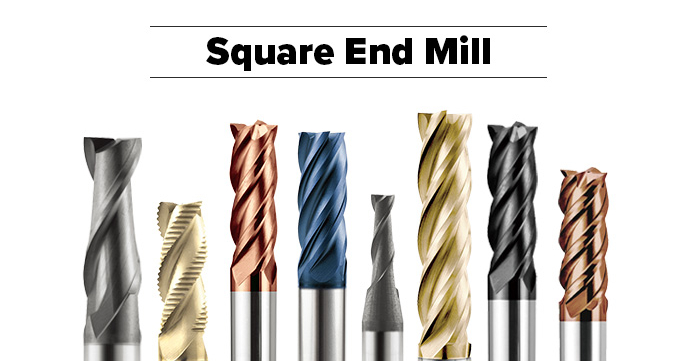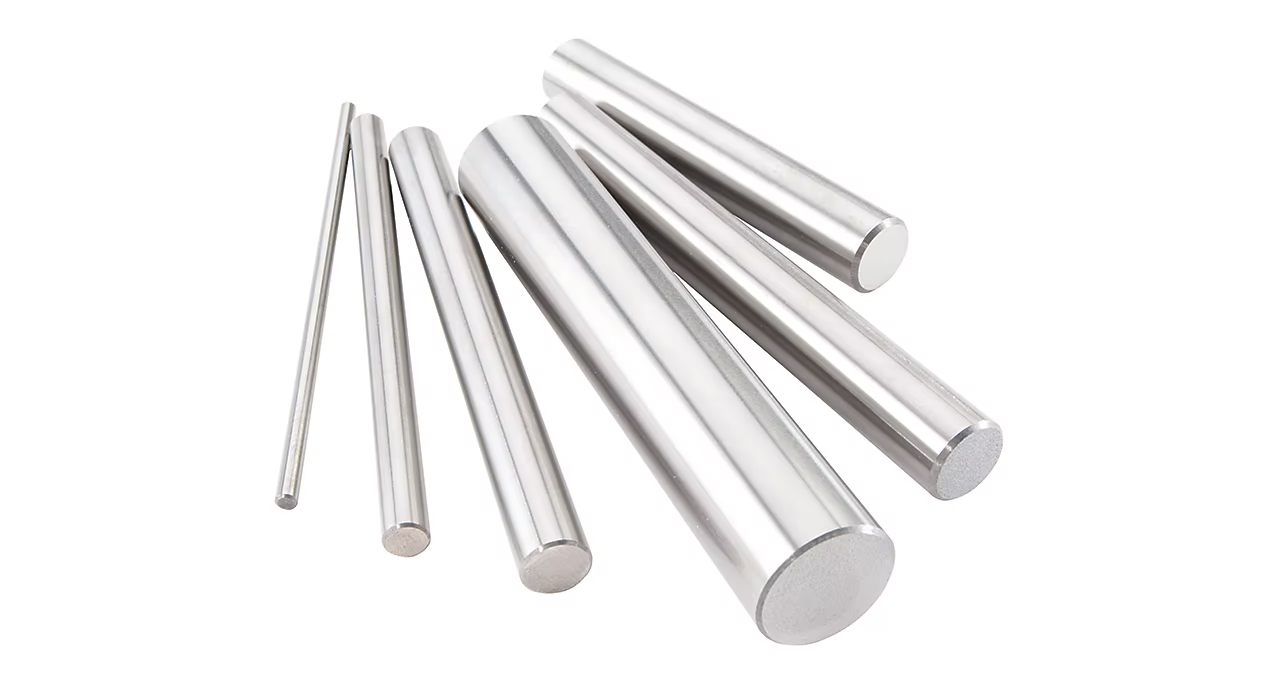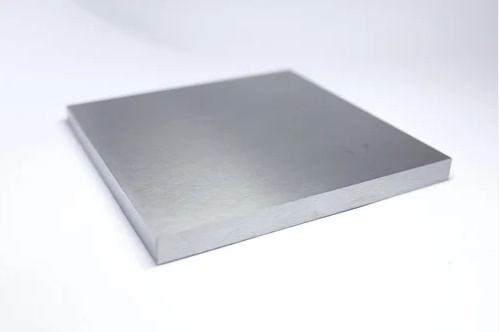Conquering Corners with Confidence: Carbide Square End Mills for Exceptional Strength and Precision
카바이드 square end mills are indispensable tools in the world of machining, renowned for their ability to create precise 90-degree shoulders, slots, and profiles in a wide array of materials. Unlike their round counterparts, these tools feature a square cutting profile, making them ideal for applications where sharp corners and flat bottoms are essential. This comprehensive guide delves into the intricacies of carbide square end mills, exploring their construction, applications, advantages, and the key factors for achieving superior machining results.
What Defines a Carbide Square End Mill?
A carbide square end mill is a precision cutting tool specifically designed to produce sharp, 90-degree corners and flat-bottomed features in machining operations. Unlike round carbide square end mills that create a radius at the bottom of a cut, square end mills leave a distinct, flat surface. They are typically crafted from solid carbide, a material celebrated for its exceptional hardness, wear resistance, and ability to maintain sharp cutting edges even under demanding conditions.

Dissecting the Design: Anatomy of a Carbide Square End Mill
주요 구성 요소와 그 기능:
- 최첨단: The defining feature of a square end mill, these edges are precisely ground to a 90-degree angle, ensuring sharp corners and flat bottoms in machined features. The number of cutting edges (flutes) can vary, influencing chip evacuation and cutting performance.
- Shank: The cylindrical portion of the end mill that is securely held within the tool holder of the milling machine, providing stability and accurate positioning during operation. Common shank types include Weldon, Whistle Notch, or straight shanks, each offering distinct clamping mechanisms.
- Body: Crafted from solid carbide, the body provides exceptional rigidity and resistance to deflection, enabling precise cuts even under high cutting forces. The body diameter typically matches the cutting diameter of the end mill.
From Powder to Precision: The Manufacturing Process
변화의 여정:
- 분말 야금: The process begins with fine tungsten carbide powder, often blended with other carbides (e.g., titanium carbide, tantalum carbide) and a metallic binder, usually cobalt.
- 압축: The powder mixture is subjected to immense pressure within a mold, forming a “green body” with the desired shape of the end mill.
- 소결: The green body undergoes a high-temperature sintering process in a controlled atmosphere furnace. This critical step fuses the carbide particles, creating an incredibly hard and dense solid carbide structure.
- Grinding and Coating: After sintering, the end mill blank undergoes precision grinding operations to achieve the precise cutting edge geometries and dimensions. To further enhance performance, various coatings, such as TiN, TiCN, AlTiN, or DLC, can be applied using advanced deposition techniques.
The Mechanics of Machining: How Carbide Square End Mills Work
Creating Sharp Corners and Flat Bottoms:
Carbide square end mills primarily employ shearing and compression to remove material from a workpiece:
- Shearing: The sharp, 90-degree cutting edges shear away material in a manner similar to a chisel, creating chips that are expelled through the flutes.
- Compression: As the end mill engages the workpiece, it exerts compressive forces, particularly at the cutting edges, contributing to material removal and the creation of flat bottoms.
- Friction: The interaction between the cutting edges and the workpiece generates heat due to friction. Managing this heat through coolant application is essential for tool life and surface finish.
Applications Abound: Where Carbide Square End Mills Shine
From Aerospace to Die Making, and Beyond:
- 항공우주: Machining high-strength, lightweight alloys like titanium and aluminum for critical aircraft components requiring sharp corners, such as brackets, fittings, and structural elements.
- 몰드 제작: Creating precise cavities, slots, and ejector pin holes in molds and dies used for injection molding, die casting, and other molding processes.
- Die and Tool Making: Machining punches, dies, and tooling components used in stamping, forming, and cutting operations where sharp edges and precise dimensions are paramount.
- 일반 가공: Creating keyways, slots, pockets, and other features in a wide range of materials, including steel, stainless steel, cast iron, and plastics.
Navigating the Selection Process: Choosing the Right Carbide Square End Mill
Key Considerations for Optimal Performance:
- 소재 호환성: Different carbide grades are optimized for specific material groups. For example, a C2 grade is well-suited for aluminum and non-ferrous metals, while a C7 grade excels in machining abrasive materials like cast iron.
- Coating Selection: Coatings enhance tool life, improve surface finishes, and enable higher cutting speeds. TiN is a versatile general-purpose coating, TiCN offers increased hardness, AlTiN excels in high-heat applications, and DLC provides exceptional lubricity for machining composites.
- Number of Flutes: Fewer flutes (e.g., 2 or 4) provide larger chip clearance, ideal for roughing operations in softer materials. More flutes (e.g., 6 or 8) offer a finer finish and are suitable for finishing operations or machining harder materials.
The TRUER Advantage: Why Choose Us for Your Carbide Square End Mill Needs?
Uncompromising Quality and Unwavering Support:
- 정밀 엔지니어링: TRUER’s carbide square end mills are meticulously engineered to deliver exceptional accuracy and repeatability, ensuring sharp corners, flat bottoms, and precise dimensions in every cut.
- 프리미엄 카바이드 등급: 당사는 경도, 인성 및 내마모성을 고려하여 엄선된 최고 품질의 초경 소재만을 공급하여 공구 수명을 연장하고 최적의 성능을 보장합니다.
- 애플리케이션별 전문성: 당사의 숙련된 엔지니어 팀은 선택 프로세스를 탐색하고 특정 가공 요구 사항에 이상적인 카바이드 사각 엔드밀을 정확히 찾아낼 수 있도록 전문적인 지침을 제공합니다.
- 사용자 지정 기능: TRUER는 가장 까다롭고 특수한 애플리케이션 요구 사항까지 충족하는 맞춤형 엔지니어링 솔루션을 전문적으로 제작합니다. 여기에는 정확한 사양에 맞게 형상, 코팅 및 크기를 조정하는 것이 포함됩니다.
트루어와 경쟁사 비교: 비교 분석
카바이드 사각 엔드밀 공급업체: 나란히 비교
| 공급업체 | 위치 | 가격 범위(개당, 대략적인 가격) | 스페셜티 |
|---|---|---|---|
| TRUER | 미국 | $25 – $300+ | 타협하지 않는 품질, 애플리케이션별 설계, 경쟁력 있는 가격, 탁월한 고객 지원 |
| 하비 도구 | 미국 | $30 – $350+ | 광범위한 소형 및 특수 엔드밀, 고정밀, 복잡한 응용 분야에 중점을 둔 제품 선택 |
| Garr 도구 | 미국 | $28 – $320+ | 품질과 내구성으로 유명한 다양한 표준 및 맞춤형 초경 절삭 공구를 제공합니다. |
| 멜린 도구 | 미국 | $22 – $280+ | 까다로운 응용 분야, 혁신적인 형상 및 코팅을 위한 고성능 엔드밀 전문 업체입니다. |
참고: 카바이드 사각 엔드밀의 가격은 엔드밀 크기, 유형, 재질, 코팅, 주문 수량 등 다양한 요인에 의해 영향을 받습니다. 비교를 위해 항상 여러 공급업체에 견적을 요청하는 것이 좋습니다.
장단점 비교: 카바이드 사각 엔드밀의 장점과 한계
정보에 입각한 가공 결정 내리기: 균형 잡힌 관점
| 기능 | 장점 | 제한 사항 |
|---|---|---|
| 날카로운 모서리와 평평한 바닥 | - 정밀한 90도 숄더, 슬롯 및 프로파일이 필요한 애플리케이션에 이상적입니다.<br> - 모서리를 정사각형으로 만들거나 평평한 바닥을 만들기 위한 2차 작업이 필요하지 않습니다. | - 특히 단단한 재료를 가공하거나 부적절한 절삭 파라미터를 사용할 때 둥근 엔드밀보다 칩핑이나 파손이 더 쉽게 발생할 수 있습니다. |
| 높은 경도 및 내마모성 | - 경화강 및 연마재를 포함한 다양한 소재의 가공이 가능합니다.<br> - HSS 엔드밀에 비해 공구 수명이 연장되어 시간이 지남에 따라 툴링 비용이 절감됩니다. | - 진동을 최소화하고 잠재적인 공구 손상을 방지하기 위해 견고한 설정과 기계가 필요합니다. |
| 뛰어난 치수 정확도 | – Capable of achieving tight tolerances and precise dimensions, ensuring part consistency and quality<br> – Often reduces or eliminates the need for secondary finishing operations | - 초기 비용은 HSS 엔드밀보다 높을 수 있지만, 연장된 공구 수명과 우수한 성능으로 초기 투자 비용을 상쇄하는 경우가 많습니다. |
자세히 알아보기: 카바이드 사각 엔드밀에 대한 흥미로운 인사이트
기본을 넘어서:
- 칩 제어: 특히 깊은 슬롯이나 포켓에서 카바이드 사각 엔드밀을 사용할 때는 칩을 효과적으로 배출하는 것이 중요합니다. 나선 각도가 더 높은 카바이드 사각 엔드밀을 사용하거나 칩 브레이커를 사용하면 칩을 쉽게 제거할 수 있습니다.
- 절단 속도 및 이송 속도: 적절한 절삭 파라미터를 선택하는 것은 공구 수명과 표면 조도를 위해 필수적입니다. 공구 제조업체에서 제공하는 절삭 속도 및 이송 속도 차트를 참조하거나 온라인 계산기를 활용하여 지침을 얻으세요.
- 공작물 고정: 가공 중 공구 파손이나 부정확한 절삭으로 이어질 수 있는 움직임이나 진동을 방지하기 위해 공작물을 단단히 고정하는 것이 가장 중요합니다.
자주 묻는 질문: 카바이드 사각 엔드밀 관련 질문 해결하기
1. 초경 사각 엔드밀을 고속강(HSS) 사각 엔드밀에 비해 사용하면 어떤 주요 이점이 있나요?
카바이드 사각 엔드밀은 HSS 엔드밀에 비해 경도와 내마모성이 훨씬 높아서 더 단단한 소재를 가공하고 훨씬 더 오래 사용할 수 있습니다. 따라서 생산성이 향상되고 표면 조도가 개선되며 시간이 지남에 따라 툴링 비용이 절감됩니다.
2. 경화강 가공에 카바이드 사각 엔드밀을 사용할 수 있나요?
예, 카바이드 사각 엔드밀은 경화강 가공에 적합하지만 적절한 카바이드 재종을 선택하는 것이 중요합니다. C7 또는 C8과 같은 더 단단한 재종은 경화 소재 가공용으로 특별히 설계되었습니다. 최적의 카바이드 재종을 선택하려면 항상 공구 제조업체의 권장 사항을 참조하세요.더 자세히 알고 싶으신가요? 문의해 주세요 클릭.
3. 카바이드 사각 엔드밀에 코팅을 하는 목적은 무엇인가요?
TiN, TiCN, AlTiN, DLC와 같은 코팅은 여러 가지 방식으로 카바이드 사각 엔드밀의 성능을 향상시킵니다. 표면 경도를 높이고, 마찰과 열 발생을 줄이며, 내마모성을 개선하고, 칩 배출을 향상시킬 수도 있습니다. 각기 다른 코팅은 특정 용도에 최적화되어 있으므로 가공 요구 사항에 맞는 코팅을 선택하는 것이 필수적입니다.
4. 카바이드 사각 엔드밀의 올바른 절삭 속도와 이송 속도는 어떻게 결정하나요?
절삭 속도 및 이송 속도 권장 사항은 일반적으로 공구 제조업체에서 제공하며 가공되는 재료, 카바이드 사각 엔드밀의 직경, 절삭 깊이 및 원하는 표면 조도와 같은 요소의 영향을 받습니다. 최적의 절삭 파라미터를 결정하는 데 도움이 되는 온라인 계산기도 사용할 수 있습니다.
5. 카바이드 사각 엔드밀의 일반적인 마모 또는 손상 징후는 무엇이며 이를 방지하기 위해 어떤 조치를 취할 수 있나요?
일반적인 마모 징후로는 절삭력 증가, 표면 마감 불량, 과도한 열 발생, 절삭날의 칩핑 또는 부러짐 등이 있습니다. 조기 마모나 손상을 방지하려면 적절한 절삭 파라미터를 사용하고, 절삭유를 효과적으로 도포하며, 단단한 설정을 유지하고, 과도한 공구 편향을 피해야 합니다. 카바이드 사각 엔드밀에 마모 징후가 있는지 정기적으로 검사하고 필요한 경우 즉시 교체합니다.




